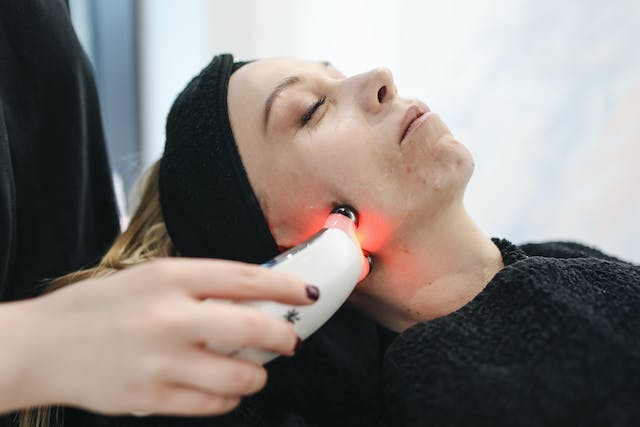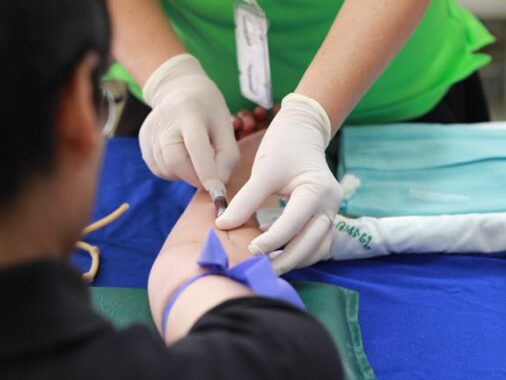Having flawless, even-toned skin is a desire shared by many, and while various factors can contribute to skin imperfections, one common concern is the presence of brown spots or hyperpigmentation. Brown spots can result from sun exposure, hormonal changes, or skin injuries and often affect the face, hands, and other visible areas. For those seeking to achieve flawless skin, laser treatments for brown spot removal have emerged as highly effective and minimally invasive options. In this article, we will explore how laser treatments can help you attain a more even and radiant complexion.
I. Understanding Brown Spots
Brown spots, also known as hyperpigmentation, occur when there is an overproduction of melanin, the pigment responsible for skin color. This excess melanin leads to the formation of dark patches or spots on the skin. Common types of brown spots include:
Sunspots (Solar Lentigines): These are typically caused by prolonged sun exposure. Sunspots are small, and round, and can vary in color from light brown to dark brown. They commonly appear on areas frequently exposed to the sun, such as the face and hands.
Age Spots (Liver Spots): Age spots, often referred to as liver spots, typically develop as individuals age. They are flat, oval, and tan to dark brown in color. Age spots usually appear on sun-exposed areas, such as the face and hands.
Melasma: Melasma is a type of hyperpigmentation commonly associated with hormonal changes, such as pregnancy or the use of birth control pills. It manifests as large, irregularly shaped brown patches on the face, particularly on the cheeks, forehead, and upper lip.
Post-Inflammatory Hyperpigmentation (PIH): PIH results from skin injuries or inflammation, such as acne, cuts, or burns. It often appears as dark spots or patches in areas where the skin has healed after an injury.
II. The Role of Laser Treatments
Laser treatments have revolutionized the field of dermatology by offering precise and effective solutions for brown spot removal. The principle behind laser treatments for brown spots is selective photothermolysis. This process involves using specific laser wavelengths that target the excess melanin in brown spots, heating and breaking down the pigmented cells, while leaving the surrounding skin unharmed.
III. Types of Lasers for Brown Spot Removal
Dermatologists use various types of lasers and light-based devices to effectively treat brown spots. The choice of laser technology depends on factors such as the type and depth of pigmentation, the individual’s skin type, and the location of the brown spots. Common lasers used for brown spot removal include:
Q-Switched Nd:YAG Laser: This laser is effective for treating sunspots and age spots. It delivers short pulses of high-intensity laser energy, breaking down melanin and promoting skin rejuvenation.
Fractional Lasers: Fractional lasers, such as the fractional CO2 laser, create tiny columns of thermal damage in the skin, which trigger the body’s natural healing response. This process can improve the appearance of brown spots and overall skin texture.
Intense Pulsed Light (IPL): IPL devices use broad-spectrum light to target melanin in the skin. They are particularly effective for addressing sunspots and general skin discoloration.
Alexandrite Laser: The Alexandrite laser is known for its precision and effectiveness in removing pigmented lesions, including brown spots. It is often used for age spot removal.
IV. The Treatment Process
The process of laser remove brown spots on the face typically involves the following steps:
Consultation: The first step is to consult with a licensed dermatologist or practitioner. During the consultation, the practitioner will assess your skin type, the type of brown spots you have, and your overall medical history to determine the most suitable laser treatment.
Preparation: Before the procedure, the treated area may be cleansed, and a topical numbing cream or gel may be applied to minimize discomfort. Some lasers also have built-in cooling systems to enhance patient comfort.
Laser Application: The laser is applied to the brown spots using controlled pulses of laser energy. During the treatment, you may feel a mild stinging or snapping sensation, but most patients tolerate the procedure well.
Post-Treatment Care: After the procedure, the treated area may appear slightly red and swollen, similar to a mild sunburn. These side effects are usually temporary and subside within a few hours to a few days. It’s crucial to follow post-treatment care instructions provided by your practitioner, which may include using sunscreen and avoiding sun exposure.
V. Number of Sessions and Maintenance
The number of laser sessions required for brown spot removal varies based on the type and depth of pigmentation, as well as individual factors. In many cases, multiple sessions are needed to achieve optimal results. Maintenance sessions may also be recommended to ensure the longevity of the treatment effects.
VI. Advantages of Laser Brown Spot Removal
Laser treatments for brown spot removal offer several advantages:
Precision: Lasers can precisely target and break down excess melanin, leaving the surrounding skin unharmed.
Minimally Invasive: Laser treatments are non-surgical and typically require little to no downtime.
Effective: Many patients experience a significant reduction in the appearance of brown spots after laser treatment.
Quick Results: Improvements are often visible within weeks of treatment.
Achieving Flawless Skin with Laser Brown Spot Removal Laser treatments for brown spot removal have become a popular choice for individuals seeking to achieve flawless, even-toned skin. These treatments offer precision, effectiveness, and minimal downtime, making them a preferred option for many. To determine the best laser treatment for your specific brown spots, it’s essential to consult with a licensed dermatologist or practitioner who can assess your individual needs and provide tailored solutions. With the power of lasers, achieving radiant and even skin has become more attainable than ever.






